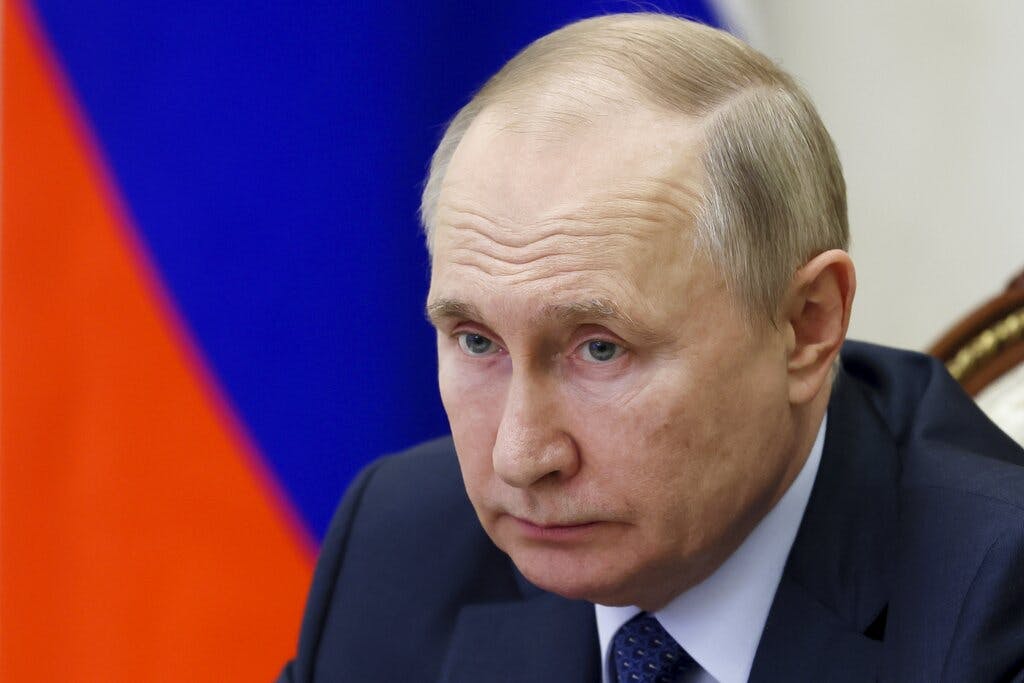State Department, NATO Send Mixed Messages on Ukraine Attacks in Russia
‘We are not enabling Ukraine to strike beyond its borders,’ the state department spokesman, Ned Price, said.

With Kyiv bringing the fight against Russian aggression closer to Moscow, as a pair of attacks at military bases inside Russia earlier this week apparently showed, the reactions from some of its Western allies — Washington included — have been tempered.
Explosions at the Engels base in the Saratov region on the Volga River and the Dyagilevo base in the Ryazan region in western Russia that Moscow blamed on Ukraine were followed on Tuesday by drone strikes on targets closer to the Ukrainian border, but still well inside Russia. At a daily news briefing on the same day, the state department spokesman, Ned Price, said, “We are not enabling Ukraine to strike beyond its borders.”
As if to serve Moscow with a double dose of its own medicine, Ukraine reportedly employed jet-propelled, ex-Soviet Tupolev Tu-141 drones in Monday’s strikes on the Russian bases.
The increasing audaciousness of Ukrainian attacks beyond its long border with Russia is stunning, considering that between Ukraine and Russia the latter is still the superpower — and one with a vast nuclear arsenal at that — but is also causing some anxiety. On Wednesday, President Putin said at a televised conference that with respect to nuclear weapons, “we haven’t gone mad,” but that may not allay concerns over escalation, particularly among European countries. Yet in his press briefing, Mr. Price appeared to echo some of that sentiment: “We are providing Ukraine with what it needs to use on its sovereign territory, on Ukrainian soil, to take on Russian aggressors,” he told reporters.
A remark that Secretary Blinken made prior to Mr. Price’s statements underscores the cautiousness that has come to mark the Biden administration’s approach to Ukraine’s newfound daring. At a conference hosted by the Wall Street Journal on Monday, Mr. Blinken said Washington wants to ensure that Ukraine can defend itself and that the county can “take back territory that’s been seized from it since February 24.” Does that exclude Crimea, though?
February 24 refers to the date that Russian forces invaded Ukraine from the north, but Russia in 2014 seized the Crimean peninsula from Ukraine and subsequently annexed it.
Curiously, the following day Mr. Price said that the question of whether there was a difference between territory Russia took after February of this year and what it seized prior to that was one “for the Ukrainian government,” but not for the U.S. government.
President Zelensky has unambiguously stated that Russia’s war on Ukraine started in Crimea, and that in Ukraine’s view it will finish in Ukraine, a clear indication that at least for now Kyiv does not consider the strategic peninsula to be up for grabs.
The NATO secretary-general, Jens Stoltenberg, said on Wednesday that “what we see is that Ukraine is defending itself. And we need to understand this in the wider context. We see daily attacks by Russia on Ukrainian cities.” He added that “this is a brutal kind of warfare that actually affects all civilians” and that “of course, Ukraine has the right to defend itself against these kinds of attacks.” Mr. Stoltenberg appeared to skirt the specific issue of Crimea.
As the war lurches toward the 10-month mark, more questions loom as to how Ukraine will continue to defend itself. It has more, if not all, of the Western-supplied weapons that it needs to keep up the fight, and there is little doubt that Kyiv’s counterstrikes will intensify. Yet will they continue with regularity to reach into Russian territory? If so, will the Kremlin retaliate, or will it experience enough “Ukraine fatigue” of its own to finally call it quits?
In any case, there is a method to what for some of Ukraine’s less robust European allies — Hungary, for one, comes to mind — could be construed as madness in taunting Moscow right under its nose. The more Russia strikes Ukraine’s critical infrastructure, the tougher time Ukrainians will have getting through the winter without freezing. In an interview with Reuters Wednesday, Kyiv’s mayor, Vitali Klitschko, said that “Kyiv might lose power, water, and heat supply. The apocalypse might happen, like in Hollywood films, when it’s not possible to live in homes considering the low temperature.”
Against that harsh reality, Ukraine’s efforts to stamp out the risk of more Russian strikes at their source — to wit, inside the Russian Federation — makes complete sense. Yet for now at least, and for reasons that are not completely clear, Washington’s response remains lukewarm.
Meanwhile, heavy fighting continued into Thursday, the AP reported, mostly in the regions Russia has annexed. President Zelensky’s office said that 11 civilians were killed and 17 wounded in Ukraine the day prior. In terms of fighting, the Donetsk region in the eastern Donbas has lately seen the most frequent combat between Russian and Ukrainian forces on the ground.
Also on Thursday there were multiple reports of three powerful explosions at a Russian air base in Russian-occupied Berdiansk. That base is in Ukraine’s central Zaporizhzhia region.

